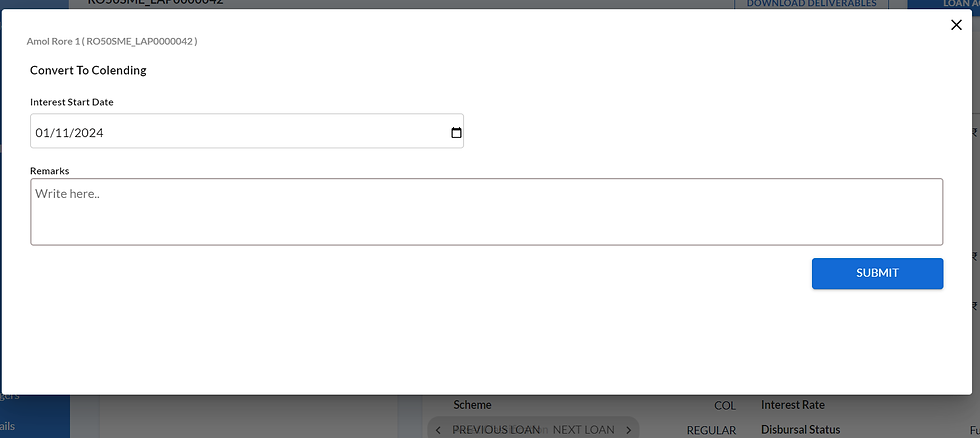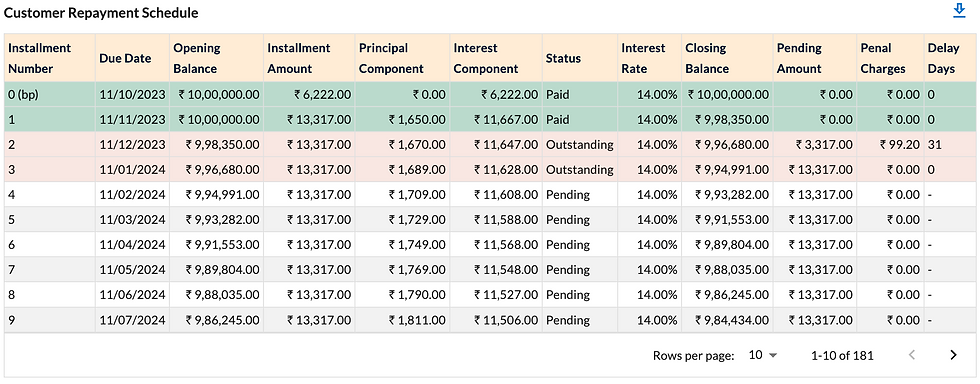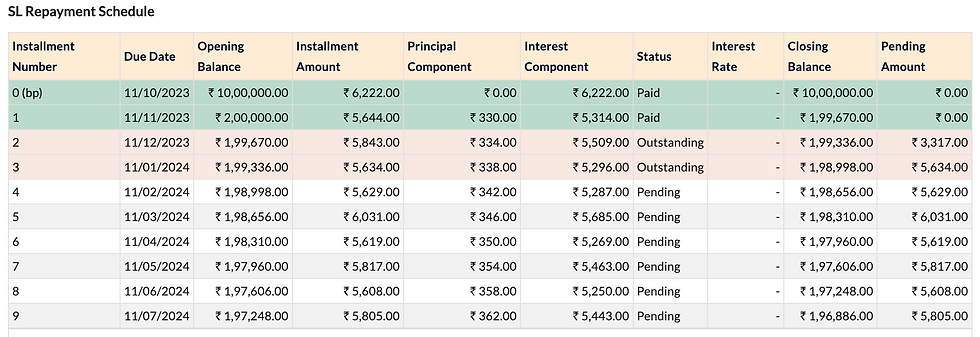How to manage co-lending operations with ease?
- Mudit Jain
- Jan 28, 2024
- 3 min read
Updated: Jan 31, 2024

Your problem statement?
Managing co-lending calculations very soon becomes difficult to handle through Excels. And a proper system is required to handle co-lending math.
Sharing examples of questions posed by our customers during demos
How to maintain 3 repayment schedules for every loan?
Handling day count convention difference - Bank follows Actual/365 but I follow 30/360
Loan has already started and bank approves for co-lending after a month or more
Handling of scenarios when the bank payment date is not aligned to the loans repayment date
How to handle scenarios in receipts and rescheduling?
What happens in case of short payment by the customer?
What happens in case of excess payment by the customer?
How does the receipt allocation work in such cases?
How to handle part pre-payment handled?
How to handle rescheduling events?
How is foreclosure handled?
Handling accounting
How to handle co-lending accounting?
Accounting in case of any rescheduling event
Bank recon with escrow account
Generating payout reports
Synoriq LMS solves it all with its feature rich Co-Lending module!
Synoriq LMS being world's best loan management systems offers a co-lending module as an add-on which is deep in its approach.
Let me highlight Synoriq LMS Co-lending features below
Define co-lending agreements
Define the lending partners
Define risk sharing i.e. 80:20
Hurdle rate by primary lender
Charges split
Lender-wise day count convention
Lender-wise receipt allocation sequence
Logos and document templates

Convert regular loans to Co-Lending
As per Co-Lending Model#2 (CLM2) - akin to direct assignment
Ability to define the interest start date for primary lender
Repayment schedules to take care of the interest income to be only attributed to sourcing lender till the date of co-lending conversion
Generation of three repayment schedules on the date of convert-to-colending
Handling of charges split as per the defined masters

Bulk upload of co-lending loans for a quick turn-around
This is useful when Synoriq LMS is only used for co-lending computations

Generation of triple repayment schedules
Handling of broken period interests



Best co-lending architecture to handle complexities
Most co-lending softwares get stuck in complexities when there is a difference in day-count convention or receipt allocation logic between lenders
Synoriq has architected co-lending module with spawning off multiple LMS instances in background - 1) one for the customer 2) 2nd one for the primary lender 3) 3rd one for the colending relationship
This architecture allows in handling all types of complexities like differences in day-count convention and receipt allocation sequence
Loan operations
Receipts
Receipt allocation for customer instance as per sourcing lender's configurations
Auto posting of receipts to primary lender's Synoriq co-lending instance as per conventions of primary lender
Handling of edge-cases like
Short payment by the customer
Excess payment by the customer
Different receipt allocation logics
Payments
Payment management through escrow OR reimbursements
Rescheduling
Part pre-payment by customer and rescheduling
Tranche disbursements
Interest rate change - floating rate review
Interest start date change
Closure
Foreclosure handling
Maturity closure
Settlement handling
Accounting operations
Voucher posting
Net impact direct posting
Reversal entries posting
Bank recon with escrow account / handling for reimbursements
You already have an LMS then will you need to replace it?
Ok we have three deployment solutions for you.
# | Deployment approach | Pros | Cons |
1 | Continue using your legacy LMS for all the loans. And use Synoriq LMS for co-lending calculations and to generate reversal accounting entries |
|
|
2 | Continue using your legacy LMS for regular loans. And use Synoriq LMS for managing co-lending loans |
|
|
3 | Replace your legacy LMS with world's best loan management system - Synoriq LMS |
|
|
Deployment Option#1 Use Synoriq LMS for co-lending calculations and accounting reversal entries

Deployment Option#2 Use Synoriq LMS for co-lending loans and use your current LMS for all other loans

Deployment Option#3 Replace your legacy LMS with Synoriq LMS
Well it would be good if you replace it, it is going to provide your tons of other benefits too. Read our article on Unveiling the Top 12 Reasons why Synoriq LMS Outshines its Competition

Conclusion
Synoriq LMS offers a perfect in-depth solution for your co-lending requirements
Synoriq recommends going with option#3 - complete replacement of legacy LMS system. However for quick turn-around Option#1 can also be considered.



Comments